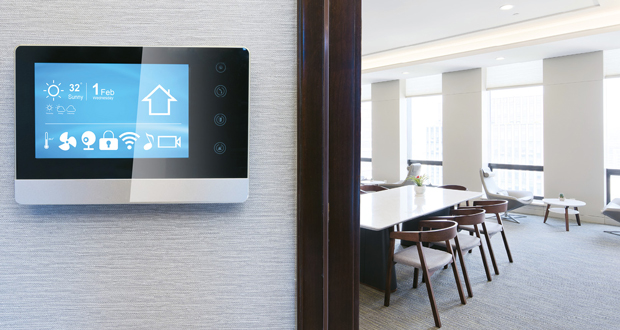EFFECTS OF UNREGULATED OFFICE TEMPERATURES
Beyond unhappy or irritable staff, there are several ramifications for an unsuitable office climate. While there are currently no laws in regards to a maximum working temperature, employers must follow health and safety legislation to ensure the temperature is ‘reasonable’.
Legislation is varied but may include keeping the temperature at a comfortable level, alongside providing clean and fresh air to your employees. Causing your employees to overheat could lead to a lawsuit in regards to working conditions – so it is best to ensure all your occupants are comfortable and happy – which in turn may lead to more productive and loyal staff.
The increase in the frequency of heatwaves is simultaneously likely to influence lawmakers to introduce a maximum and minimum working temperature. As workers have found their rights bolstered by the COVID-19 pandemic, instigating several changes in the working environment as we know it, such laws help protect both businesses and individuals to ensure a mutually agreeable work habitat.
WHAT ABOUT THE REST OF THE WORLD?
While there is currently no legislation for a working temperature in the UK, this is not the case in several places worldwide with hotter climates. For example, the World Cup in Qatar has been subject to negative press, as migrant workers were used to build stadiums. These workers were not held to the same standard as Qatari workers, who benefit from a law that protects their workers from the summer heat.
As a standard, Qatari workers are prohibited to work outside between 10am to 3.30pm between June 1st and September 15th due to the risks of heat stress and extreme temperatures. At these times, the thermostat average varies from 34ºc to 37ºc, with humidity levels ranging from 40 per cent to 60 per cent across the months. The figures may seem low – especially when you consider the UK reached hotter temperatures this summer – but climate change has drastically accelerated temperature rises in the country and continent. The heatwaves that hit the area have subsequently led to terrifying temperatures, including 50.4ºc measured during July 2010 in Doha. At such heat, conditions such as heat stroke and heat exhaustion are likely – alongside irreversible damage to your cells due to the extreme conditions.
These drastic temperatures have necessitated studies. Zeke Hausfather, a Climate Data Scientist that works at Berkeley Earth, has stated that “Qatar is one of the fastest warming areas of the world, at least outside of the Arctic… changes there can help give us a sense of what the rest of the world can expect if we do not take action to reduce our greenhouse gas emissions.”
Qatar is therefore one to watch – and not only because of the World Cup. Despite this, it is worth noting that air conditioning and working conditions may not be the priority of the World Cup – but that temperature has been factored into construction for visitors. Each of the 40,000 seats inside the Al Janoub football stadium, built in 2019 for the 2022 World Cup, offers a cool breeze. From small grates adorned with traditional Arabic patterns, large vents push cold air towards ankles and out towards the playing field. The innovative air conditioning system was designed by Saud Ghani, an Engineering Professor from Qatar University, and was vital to the success of Qatar holding the World Cup. Other measures introduced include forced drinking breaks for players and moving the tournament to the winter to ensure cooler temperatures.
The only setback to the project is the cost. Qatar is an incredibly wealthy area, with money to spend – the Al Janoub Stadium itself cost $576 million (£493 million) to build, and its own gas reserves. In comparison, a standard office in the UK would likely be unable to afford such measures, especially during a time when electricity prices are elevated. Despite this, when prices lower, introducing individual or personal cooling systems for each office worker could eradicate any arguments for a general temperature.
However, there are other, more affordable measures being introduced worldwide. Another place to look at in regards to exciting, new solutions in the race against climate change includes a passive cooling system developed by MIT in Massachusetts, USA. Instead of using electricity, the system combines radioactive cooling, evaporative cooling and thermal insulation. The cooling system can therefore enable safe food storage for about 40 per cent longer under very humid conditions, allowing users to store food or replicate air conditioning – all for a minimal cost.
A standard office block could easily replicate this revolutionary system. The cheap installation and running cost could lead to offices splitting into several rooms, each at a different temperature to suit the individuals inside. Such a system, operating in conjunction with hot desking, could encourage collaborative working, foster relationships and enable your employees to alter their temperature throughout the day.
DOES THE IDEAL TEMPERATURE EXIST?
A study published by Nature in 2015 suggested the 21ºc to 22º model of temperatures was based off of an empirical model from the 1960s. Despite this, our recent survey results reveal a mixed pool of women and men desire a climate of around 20ºc to 21º. The degree shift could be in line with global warming, as the air is hotter outside of the office, or it may be down to a preferential shift.
The ultimate way to offer your employees their ideal temperature is by listening to your workforce and offering suitable alternatives for any staff who may run hot or cold. For example, keeping blankets on site may be beneficial to any staff with cold intolerances and is a low-cost investment into staff wellbeing. Alternatively, readily available desk fans can be a game-changer for your employees in the hotter months, especially as heat waves become a normal element of a British  summer.
summer.
Unfortunately, every individual has different requirements when it comes to temperature. For example, the Founder of Facebook (Meta), Mark Zuckererg, prefers a conference room with a temperature set to 15ºC. Alternatively, President Obama faced criticism for keeping his office warm enough to ‘grow orchids in’, with the plants thriving in 24ºc environments.
Whether a president or a billionaire, it is clear there is no unified answer for office temperature – wherever you are in the world. For now, we recommend setting the temperature to 21ºc – after all, if your staff aren’t happy about it, they will be sure to let you know.





